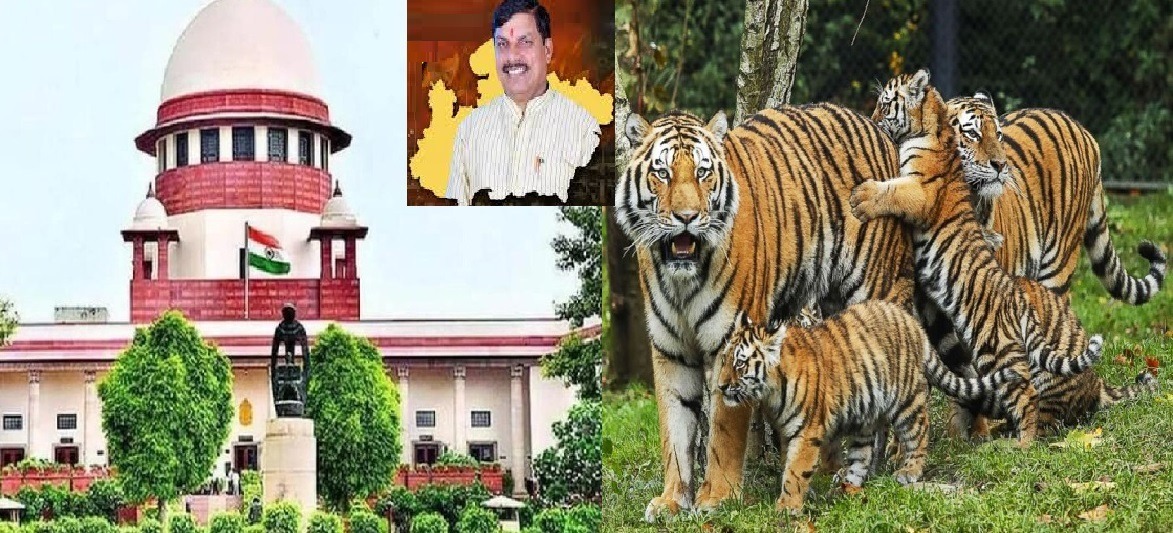You can consider it a coincidence that Prime Minister Narendra Modi, on the occasion of completion of 75 years of establishment of the Supreme Court, says, “The Supreme Court has always kept national interest paramount. 75 years of the Supreme Court is not just the journey of an institution, it is the journey of the Constitution of India and constitutional values. The Constitution makers and many wise men of the judiciary have made a significant contribution in this journey. It also has the contribution of those crores of countrymen who kept their faith in the judiciary unwavering in every situation, hence these 75 years of the Supreme Court further increase the glory of the Mother of Democracy. Therefore, there is pride and inspiration in this occasion too. On one hand, this speech of PM Modi was expressing faith in the Constitution of India and its judiciary, especially the Supreme Court and other courts, while on the other hand, after a long time, it was seen that the court has openly praised the efforts made by the BJP government at the Center for the last 10 years and the efforts and success of other states working for tiger conservation including the Madhya Pradesh government.
It must be said that 75 percent of the world's tigers are in India. The number of tigers in the country has increased from 2226 in 2014 to 3682 now. Madhya Pradesh, Uttarakhand and Maharashtra have seen a significant increase in the number of tigers. In the meantime, when the number of tigers was decreasing, it became a matter of concern not only for the environmentalists of India but also for the lovers of biodiversity and scientists around the world. After that, when the Narendra Modi government of the BJP came to power in 2014, the way Indian scientists worked together with foreign biologists and the work done at the state level by other departments of the states in collaboration with the forest departments, is the result of which today the number of tigers in India has increased to a considerable extent.
When the Prime Minister was saying today that “In the Amrit Kaal of Independence, 140 crore countrymen have only one dream – a developed India, a new India. New India means a modern India with thinking and determination.” Then certainly his statement does not include only the country's economy, political system or administrative system. It includes everything in India as a whole, because of which India is India. Thanks to the bench of Justice Sanjeev Khanna and PV Sanjay Kumar of the Supreme Court that while praising the Central Government, they have described tiger conservation, development and their growth as “good work” from the point of view of biodiversity.
Four main reasons for this state becoming a tiger state come to mind today. First is scientific displacement of villages. From 2010 to 2022, 200 small villages located in the tiger reserve were displaced. The maximum 75 villages were taken out of Satpura Tiger Reserve. Second is translocation. Barasingha, bison and wild boar of Kanha were translocated and settled in other tiger reserves. This increased the food base for the tiger. Third is habitat development. Grasslands and ponds were developed in the villages and fields that were vacated in the middle of the forest, which increased the number of herbivorous animals and also provided food for the tiger. There was an unprecedented change in the security system. Survey and monitoring was done with drones in Panna Tiger Reserve. Illegal hunting was completely stopped by controlling wildlife crime. The use of technology was increased in crime investigation and patrolling. The best example of this is Panna Tiger Reserve, which has its own drone squad. A monthly action plan for its operation is prepared every month. This is helping in finding the location of wild animals, saving them, finding the source of forest fire and gathering immediate information about its impact, averting the danger of potential human-animal conflict, and following wildlife protection law.
In fact, it is no secret that the work of restoring tigers is a very difficult task, which is being done by Madhya Pradesh with hard work day and night. Dr. Mohan Yadav's government is providing every possible help to its employees for this. If the most expensive veterinarians and tiger experts are needed, the government does not delay in sending them there. Wherever there is a danger to the tiger, the entire forest staff is seen engaged in its protection.
This is the reason that the number of tigers has been increasing since 2006, and in 2010 the number of tigers reached 257. To increase this, high level protection and sensitive efforts of tigers were necessary. For this, 16 regional rescue squads and district level rescue squads were formed in every district for effective management of human-wildlife conflict in Madhya Pradesh. 16 expert dog squads were formed to investigate wildlife crimes. The state level strike force arrested 550 criminals committing wildlife crimes from 14 states in the last eight years. Budget was arranged for wildlife management outside the protected area. A new beginning was made to share the income from wildlife tourism with the local community.
Better management of national parks has a major role in increasing the number of tigers in the state. With the help of the state government, more than 50 villages have been displaced and a large area of land has been freed from biological pressure. As a result of displacement of villages from protected areas, the habitat area of wild animals has expanded. All villages have been displaced from the core areas of Kanha, Pench, and Kuno Palpur. More than 90 percent of the core area of Satpura Tiger Reserve has also been freed from biological pressure. Along with achieving the status of Tiger State, Madhya Pradesh also achieved the top position in the country in effective management of national parks and protected areas. Satpura Tiger Reserve has been included in the tentative list of UNESCO's World Heritage.
According to the Tiger Reserve Management Effectiveness Assessment Report of the Government of India, Pench Tiger Reserve has achieved the highest rank in the country. Bandhavgarh, Kanha, Sanjay and Satpura Tiger Reserves have been considered the best managed tiger reserves. Unique management plans and innovative methods have been adopted in these national parks. Now, seeing the positive view of tiger growth here, it must be said that the most pleasing thing for Madhya Pradesh among other states of the country is that the number of tigers is increasing even outside the Tiger Reserve and this number has increased from 526 to 785 which is the highest compared to any state of the country. After Madhya Pradesh, Karnataka has 524 tigers, whereas, today Uttarakhand is at number three with 442 tigers. 259 tigers have increased in the state in four-five years. For this, we are thankful to the former Chief Minister Shivraj Singh Chauhan but the greatest gratitude goes to Chief Minister Dr. Mohan Yadav, who has given priority to environment and biodiversity in the list of priorities of his other works.
 look news india
look news india

